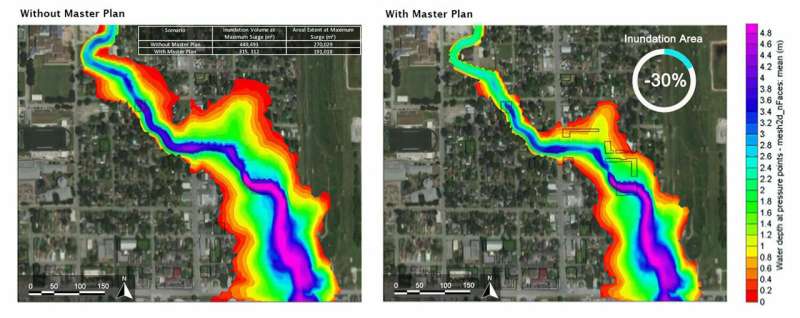
Galveston Bay and Houston areas are no strangers to flooding. Floodwaters from any number of sources often bring massive threats to life, infrastructure and property. They can also carry hidden dangers in the form of toxic chemicals from nearby industrial facilities, which not only endangers the environment and those caught in the floods but also relief and rescue workers.
A new website that maps toxic flooding vulnerabilities in the Galveston Bay area was created through the collaborative efforts of the Environmental Defense Fund, the Galveston Bay Foundation and Texas A&M University’s Dr. James Kaihatu, professor and division head in the Zachry Department of Civil & Environmental Engineering.
The website makes highly interactive geographic information systems (GIS) flood mapping publicly available. Far beyond the typical Google Maps experience, the toxic flooding vulnerability map has many layers of detailed information that can improve the understanding of these risks at the facility and community levels.
“In order to come up with the overall vulnerability, there are a lot of aspects that go into it,” Kaihatu said. “It’s not just simply the risk for flooding from either hurricanes or rainfall, but also the state of the community at present.”
The vulnerability score is not just calculated on a community’s proximity to potential polluter facilities. The research team analyzed over 100 indicators, encompassing factors like environmental conditions, public health statuses and percentiles, and socio-economic hazards and burdens.
They used publicly available U.S. EPA databases to evaluate each identified facility’s risk of chemical transport and flood vulnerability. The overall flood risks were analyzed with multiple software and predictive models.
Kaihatu explained that the goal was not to just look at one source of flooding but to see what happens when there is a confluence of floodwaters, with hurricane surge from the bay meeting riverine and rainfall sources. They also simulated climate change scenarios by amplifying waterway discharges and flow rates.
Nature-Based Solutions
Aside from highlighting the risks and vulnerabilities to communities from toxic flooding, the website also proposes nature-based solutions as potential additions to current mitigation strategies.
Two case studies were conducted for Galena Park and Texas City to show how nature-based solutions could improve conditions during or after flood surges. The two areas also provide perspectives on how these solutions work under different locational and geological conditions.
Incorporating green spaces throughout communities, like parks or urban forests, can create buffer zones that help alleviate flood impacts and toxin transport. However, it is not as simple as putting in a bunch of grasses and plants.
“For example, they would not only have drainage from friable and permeable soil, but also ways of draining it underneath, like pipes or trenches,” Kaihatu said.
Nature-based solutions can also include features like retention ponds, restored wetlands and urban forests.
Using data collected when Hurricane Ike traveled up the Houston ship channel, the case studies simulate how these solutions could perform under hurricane surges. Kaihatu’s student, Sunghoon Han, was integral in running these simulations that verified the model and showed what flood levels looked like with and without nature-based solutions.
“You see the overall reduction of the inundation area, and there’s also a reduction in terms of the residence time, so things drain quicker,” Kaihatu said about the results with the proposed nature-based solutions. “These nature-based solutions can help, but they will help to different degrees depending on the type of conditions they’re under.”
Another benefit of these solutions is that they are resilient, easily repaired and look nicer. The website also features a guide to creating master plans for community leaders and planners. All features of this site are publicly available as well as all resources used in its creation and continued development.
Faculty from Texas A&M’s College of Architecture, College of Veterinary Medicine and College of Public Health were also involved with this project over the last four years.
More information:
createnbs.org/
Provided by
Texas A&M University College of Engineering
Citation:
Toxic flooding vulnerability mapping and nature-based solutions (2024, August 5)
retrieved 5 August 2024
from https://phys.org/news/2024-08-toxic-vulnerability-nature-based-solutions.html
This document is subject to copyright. Apart from any fair dealing for the purpose of private study or research, no
part may be reproduced without the written permission. The content is provided for information purposes only.
